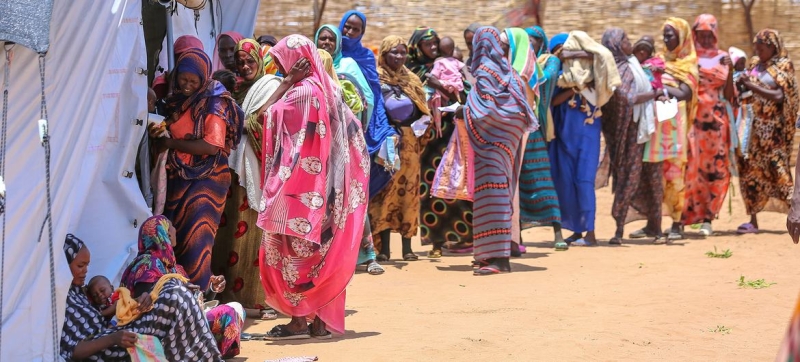
Malnutrition and maternal health clinic in Tawil, Sudan. Famine in Sudan: two cities cut off from aid Humanitarian aid
War-torn Sudan faces sharp contrasts in nutritional conditions across conflict lines, UN aid agencies reported Tuesday, according to a new study. Although the food situation has begun to improve in regions where fighting has subsided, full-blown famine threatens residents in areas cut off from aid or under siege.
Conditions of mass famine were confirmed in El Fasher and Kadugli, where “people have endured months without reliable access to food and health care,” said a joint statement from the Food and Agriculture Organization (FAO), the World Food Program (WFP) and the United Nations Children’s Fund (UNICEF).
Call for an end fire
UN Secretary-General Antonio Guterres on Tuesday called for an immediate ceasefire in Sudan as disturbing images emerged online of alleged mass killings in El Fasher and elsewhere. Guterres called on the Sudanese Armed Forces and the rebel Rapid Action Force to “come to the negotiating table to end this nightmare of violence.”
Heavy fighting between rival armies broke out in Sudan in April 2023, leading to a massive humanitarian disaster. Government-controlled El Fasher fell last week after more than 500 days of rebel siege. Hundreds of civilians – including aid workers – have reportedly been killed and many more remain behind barricades.
Millions continue to go hungry
By September, an estimated 21.2 million people in Sudan—45 percent of the population—faced acute food insecurity, according to analysis by the Integrated Food Security Phase Classification. This represents a slight improvement in the situation. Approximately 3.4 million people no longer experience crisis levels of hunger.
The improvements reflect gradual stabilization since May in three states – Khartoum, El Gezira and Sennar.
“But these achievements are limited,” the UN agencies noted. “The widespread crisis has destroyed the economy and vital services, and much of the infrastructure on which people depend is damaged or destroyed.”
Fragile progress
A favorable climate for growing crops is expected after the current harvest and next year: the scale of the hunger crisis may decrease. However, “this fragile success is highly localized,” as many families returning to their homes in Khartoum and Gezira will have difficulty reaping the benefits.
At the same time, active fighting continues in the western regions of the country, especially in North and South Darfur, as well as West and South Kordofan. Famine there is expected to worsen starting in February as food supplies dwindle and fighting continues.
Famine in Besieged Areas
Experts have determined that full-blown famine conditions exist in El Fasher, the capital of North Darfur, and Kadugli in South Kordofan. They have been largely cut off from supplies by the conflict.
UN agencies noted that the situation in the town of Dilling, Southern Kordofan, “is likely similar to Kadugli, but cannot be classified due to a lack of reliable data as a result of limited humanitarian access and ongoing fighting.”
In Western The Nuba Mountains have seen minor improvements, but hunger levels remain high until humanitarian access improves.
Experts predict the risk of widespread famine in 20 more areas of Darfur and Kordofan, including rural communities, displaced persons camps and several new locations in East and South Darfur Kordofan.
Meanwhile, with the destruction of health, water supply and sanitation systems in Sudan, cholera, malaria and measles also continue to spread.
